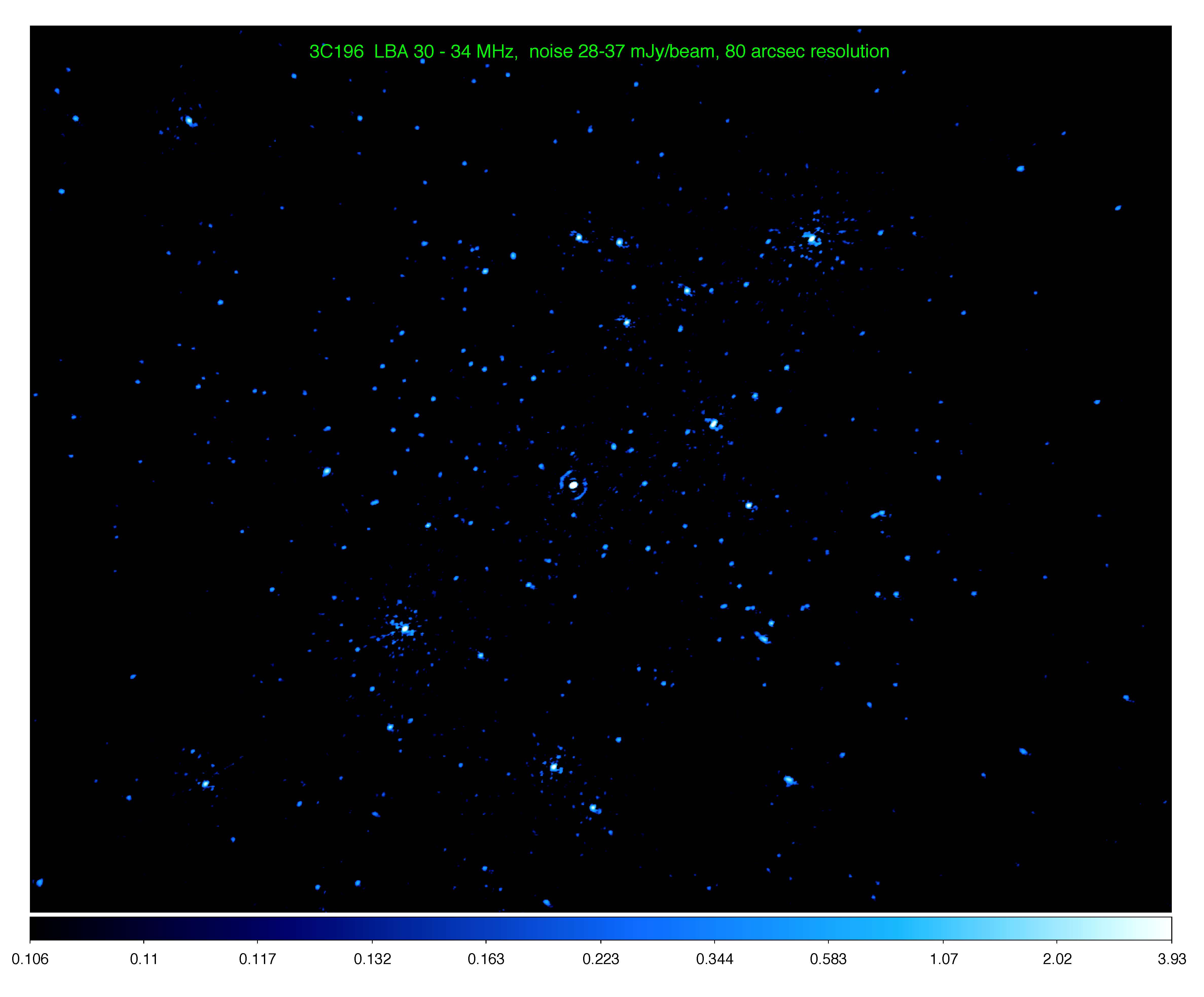[/caption]
An array of radio telescopes has connected for the first time to its various locations across Europe, creating the largest telescope in the world at almost 1000 km wide. With the connection, the LOFAR telescope has delivered its first ‘radio pictures’. The images of the 3C196 quasar, a black hole in a distant galaxy, were taken in January 2011 by the International LOFAR Telescope (ILT). LOFAR is a network of radio telescopes designed to study the sky at the lowest radio frequencies accessible from the surface of the Earth with unprecedented resolution.
The UK based telescope at Chilbolton Observatory in Hampshire, was added to the network, and is the western most ‘telescope station’ in LOFAR.
“This is a very significant event for the LOFAR project and a great demonstration of what the UK is contributing”, said Derek McKay-Bukowski, STFC/SEPnet Project Manager at LOFAR Chilbolton. “The new images are three times sharper than has been previously possible with LOFAR. LOFAR works like a giant zoom lens – the more radio telescopes we add, and the further apart they are, the better the resolution and sensitivity. This means we can see smaller and fainter objects in the sky which will help us to answer exciting questions about cosmology and astrophysics.”
“This is fantastic”, said Professor Rob Fender, LOFAR-UK Leader from the University of Southampton. “Combining the LOFAR signals together is a very important milestone for this truly international facility. For the first time, the signals from LOFAR radio telescopes in the Netherlands, France, Germany and the United Kingdom have been successfully combined in the LOFAR BlueGene/P supercomputer in the Netherlands. The connection between the Chilbolton telescope and the supercomputer requires an internet speed of 10 gigabits per second – over 1000 times faster than the typical home broadband speeds,” said Professor Fender. “Getting that connection working without a hitch was a great feat requiring close collaboration between STFC, industry, universities around the country, and our international partners.”
“The images show a patch of the sky 15 degrees wide (as large as a thousand full moons) centred on the quasar 3C196”, said Dr Philip Best, Deputy LOFAR-UK leader from the University of Edinburgh. “In visible light, quasar 3C196 (even through the Hubble Space Telescope) is a single point. By adding the international stations like the one at Chilbolton we reveal two main bright spots. This shows how the International LOFAR Telescope will help us learn about distant objects in much more detail.”
LOFAR was designed and built by ASTRON in the Netherlands and is currently being extended across Europe. As well as deep cosmology, LOFAR will be used to monitor the Sun’s activity, study planets, and understand more about lightning and geomagnetic storms. LOFAR will also contribute to UK and European preparations for the planned global next generation radio telescope, the Square Kilometre Array (SKA).
Source: STFC


How can anyone not like these results? Two objects… hmmm….any further details w/b appreciated…